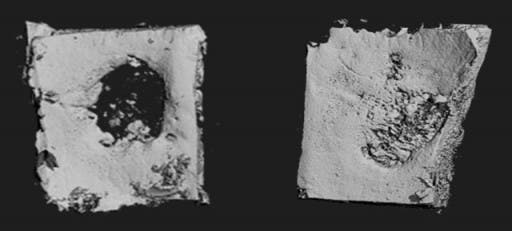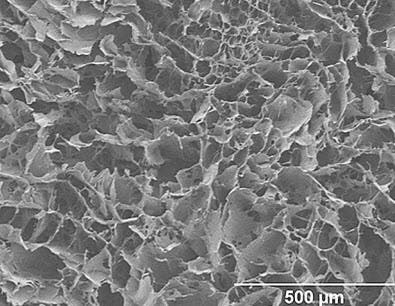
You’ll be pretty impressed by this novel research. Scientists at University of Iowa have developed an ingenious biopatch which expels nanoparticles containing DNA that instructs cells to turn into bone. Practically, you just apply this patch over a damaged area that needs reconstruction, dental surgery site or congenital bone defect and the genes do the rest of the job. Tests so far have only been made on mice, yet many more advances relating to efficiency and biocompatibility need to be confirmed before human clinical trials may begin.
Here’s how it works: first, the researchers build a collagen platform or scaffold, if you will. Then this scaffold is filled with synthetically created plasmids (small independent DNA molecules), each of which is outfitted with the genetic instructions for producing bone in vivo. Theses scaffolds were inserted over a 5-millimeter by 2-millimeter missing area of skull in test animals. Four weeks later, the team compared the bio patch’s effectiveness to inserting a scaffold with no plasmids or taking no action at all.

The plasmid-seeded bio patch grew 44-times more bone and soft tissue in the affected area than with the scaffold alone, and the patch was 14-fold higher than the affected area with no manipulation.
“We delivered the DNA to the cells, so that the cells produce the protein and that’s how the protein is generated to enhance bone regeneration,” explains Aliasger K. Salem, Ph.D. — a professor in the College of Pharmacy. ”If you deliver just the protein, you have keep delivering it with continuous injections to maintain the dose. With our method, you get local, sustained expression over a prolonged period of time without having to give continued doses of protein.”
The researchers also point out that their delivery system is nonviral, meaning there are little chances the plasmids will generate an immune response, which would have ruined any desired treatment. If moved on to humans, the treatment could be an absolute life changer for some individuals who need implants and don’t have enough bone in the surrounding area, like the missing teeth area inside a gum for dentistry applications. Also, the procedure could be used to repair birth defects where there’s missing bone around the head or face.

Findings were reported in the journal Biomaterials.






